Mishkin solutions ch7 PDF

| Title | Mishkin solutions ch7 |
|---|---|
| Course | Money and banking |
| Institution | Erasmus Universiteit Rotterdam |
| Pages | 6 |
| File Size | 165.9 KB |
| File Type | |
| Total Downloads | 29 |
| Total Views | 128 |
Summary
Chapter 7ANSWERS TO QUESTIONS What basic principle of finance can be applied to the valuation of any investment asset? The value of any investment is found by computing the value today of all cash flows the investment will generate over its life. What are the two main sources of cash flows for a sto...
Description
Mishkin • Instructor’s Manual for The Economics of Money, Banking, and Financial Markets, Twelfth Edition
102
Chapter 7 ANSWERS TO QUESTIONS 1. What basic principle of finance can be applied to the valuation of any investment asset? The value of any investment is found by computing the value today of all cash flows the investment will generate over its life. 2. What are the two main sources of cash flows for a stockholder? How reliably can these cash flows be estimated? Compare the problem of estimating stock cash flows to the problem of estimating bond cash flows. Which security would you predict to be more volatile? There are two cash flows from stock: periodic dividends and a future sales price. Dividends are frequently changed when a firm’s earnings either rise or fall, which can make them difficult to estimate. The future sales price is also difficult to estimate, because it depends on the dividends that will be paid at some date even further in the future. Bond cash flows also consist of two parts, periodic interest payments and a final maturity payment. These payments are established in writing at the time the bonds are issued and cannot be changed without the firm defaulting and being subject to bankruptcy. Stock prices tend to be more volatile, because their cash flows are more subject to change. 3. Some economists think that central banks should try to prick bubbles in the stock market before they get out of hand and cause later damage when they burst. How can monetary policy be used to prick a market bubble? Explain using the Gordon growth model. A stock market bubble can occur if market participants either believe that dividends will have rapid growth or if they substantially lower the required return on their equity investments, thus lowering the denominator in the Gordon model and thereby causing stock prices to climb. By raising interest rates the central bank can cause the required rate of return on equity to rise, thereby keeping stock prices from climbing as much. Also raising interest rates may help slow the expected growth rate of the economy and hence of dividends, thus also keeping stock prices from climbing. 4. If monetary policy becomes more transparent about the future course of interest rates, how will stock prices be affected, if at all? With more certainty over the course future interest rates will follow, uncertainty and risk would likely be reduced, which will lower the required return on investment ke and lead to a higher stock price. In addition, with a reduction in the uncertainty of future short-term interest rates, this would likely lower longer-term interest rates, increasing capital investment. This would likely raise long-run economic growth and dividend growth, also pushing stock prices higher.
Copyright © 2019 by Pearson Education, Inc. All rights reserved.
Mishkin • Instructor’s Manual for The Economics of Money, Banking, and Financial Markets, Twelfth Edition
103
5. Suppose that you are asked to forecast future stock prices of ABC Corporation, so you proceed to collect all available information. The day you announce your forecast, competitors of ABC Corporation announce a brand new plan to merge and reshape the structure of the industry. Would your forecast still be considered optimal? Your forecast is still considered to be optimal, since it was made with all available information at the time. The fact that new information that would most probably impact the stock price of ABC Corporation arrived today, is simply out of the forecaster’s control. In this case, your forecast was optimal, but shortly lived. 6. “Anytime it is snowing when Joe Commuter gets up in the morning, he misjudges how long it will take him to drive to work. When it is not snowing, his expectations of the driving time are perfectly accurate. Considering that it snows only once every ten years where Joe lives, Joe’s expectations are almost always perfectly accurate.” Are Joe’s expectations rational? Why or why not? Although Joe’s expectations are typically quite accurate, they could still be improved by his taking account of a snowfall in his forecasts. Since his expectations could be improved, they are not optimal and hence are not rational expectations.
7. If Suppose that you decide to play a game. You buy stock by throwing a dice a few times, using that method to select which stock to buy. After ten months you calculate the return on your investment and the return earned by someone who followed “expert” advice during the same period. If both returns are similar, would this constitute evidence in favor of or against the efficient market hypothesis? If both returns are similar, this would constitute evidence in favor of the efficient market hypothesis, that states that so called “expert” advice is not a better predictor of movements in stock prices than a random method. No one can predict a stock price movement if the market is efficient. The only thing that can create a price movement is new information, that by definition no one has. 8. “If stock prices did not follow a random walk, there would be unexploited profit opportunities in the market.” Is this statement true, false, or uncertain? Explain your answer. True, as an approximation. If large changes in a stock price could be predicted, then the optimal forecast of the stock return would not equal the equilibrium return for that stock. In this case, there would be unexploited profit opportunities in the market and expectations would not be rational. Very small changes in stock prices could be predictable; however, and the optimal forecast of returns would equal the equilibrium return. In this case, an unexploited profit opportunity would not exist.
Copyright © 2019 by Pearson Education, Inc. All rights reserved.
Mishkin • Instructor’s Manual for The Economics of Money, Banking, and Financial Markets, Twelfth Edition
104
9. Suppose that increases in the money supply lead to a rise in stock prices. Does this mean that when you see that the money supply has sharply increased in the past week, you should go out and buy stocks? Why or why not? No, you shouldn’t buy stocks, because the rise in the money supply is publicly available information that will be already incorporated into stock prices. Hence, you cannot expect to earn more than the equilibrium return on stocks by acting on the money supply information. 10. If the public expects a corporation to lose $5 per share this quarter and it actually loses $4, which is still the largest loss in the history of the company, what does the efficient market hypothesis predict will happen to the price of the stock when the $4 loss is announced? The stock price will rise. Even though the company is suffering a loss, the price of the stock reflects an even larger expected loss. When the loss is less than expected, efficient markets theory then indicates that the stock price will rise. 11. If you read in the Wall Street Journal that the “smart money” on Wall Street expects stock prices to fall, should you follow that lead and sell all your stocks? No, because this is publicly available information and is already reflected in stock prices. The optimal forecast of stock returns will equal the equilibrium return, so there is no benefit from selling your stocks. 12. If your broker has been right in her five previous buy and sell recommendations, should you continue listening to her advice? Probably not. Although your broker has done well in the past, efficient markets theory suggests that she has probably been lucky. Unless you believe that your broker has better information than the rest of the market, efficient markets theory indicates that you cannot expect the broker to beat the market in the future. 13. Can a person with rational expectations expect the price of a share of Google to rise by 10% in the next month? No, if the person has no better information than the rest of the market. An expected price rise of 10% over the next month implies over a 100% annual return on Google stock, which certainly exceeds its equilibrium return. This would mean that there is an unexploited profit opportunity in the market, which would have been eliminated in an efficient market. The only time that the person’s expectations could be rational is if the person had information unavailable to the market that allowed him or her to beat the market.
Copyright © 2019 by Pearson Education, Inc. All rights reserved.
Mishkin • Instructor’s Manual for The Economics of Money, Banking, and Financial Markets, Twelfth Edition
105
14. Suppose that in every last week of November stock prices go up by an average of 3%. Would this constitute evidence in favor of or against the efficient market hypothesis? If there is a phenomenon that takes place regularly and it is not incorporated into people’s expectations, then these expectations are not optimal (since they are not including all available information). We can conclude that people are not taking into account that stock prices go up every last week of November, because if they did, that price increase would represent a profit opportunity (i.e., someone could buy stock the first week of November and sell it in the last week) and would therefore be quickly exploited. This would therefore constitute evidence against the efficient market hypothesis. 15. “An efficient market is one in which no one ever profits from having better information than the rest of the market participants.” Is this statement true, false, or uncertain? Explain your answer. False. The people with better information are exactly those who make the market more efficient by eliminating unexploited profit opportunities. These people can profit from their better information. 16. If higher money growth is associated with higher future inflation, and if announced money growth turns out to be extremely high but is still less than the market expected, what do you think will happen to long-term bond prices? Because inflation is less than expected, expectations of future short-term interest rates would be lowered, and as we learned in Chapter 7, long-term interest rates would fall. The decline in long-term interest rates implies that long-term bond prices would rise. 17. “Foreign exchange rates, like stock prices, should follow a random walk.” Is this statement true, false, or uncertain? Explain your answer. True, in principle. Foreign exchange rates are a random walk over a short interval such as a week, because changes in the exchange rate are unpredictable; if a change were predictable, large unexploited profit opportunities would exists in the foreign exchange market. If the foreign exchange market is efficient, these unexploited profit opportunities cannot exist and so the foreign exchange rate will approximately follow a random walk. 18. Assume that the efficient market hypothesis holds. Marcos has been recently hired by a brokerage firm and claims that he now has access to the best market information. However, he is the “new guy,” and no one at the firm tells him much about the business. Would you expect Marcos’s clients to be better or worse off than the rest of the firm’s clients? If the efficient market hypothesis holds, then Marcos’ clients would technically not be at any disadvantage with respect to other clients of the same firm. However, information flows usually have a given hierarchy, in which some individuals get access to information before others. Even though the SEC makes a huge effort to avoid this phenomenon, it is quite difficult to completely eliminate it. Also, stockbrokers’ experience and expertise play a role in their favor.
Copyright © 2019 by Pearson Education, Inc. All rights reserved.
Mishkin • Instructor’s Manual for The Economics of Money, Banking, and Financial Markets, Twelfth Edition
106
19. Suppose that you work as a forecaster of future monthly inflation rates and that your last six forecasts have been off by minus 1%. Is it likely that your expectations are optimal? For your expectations to be optimal, they have to include all available information up to date, including the fact that you have been off by minus 1% the last 6 times. This means that you have to incorporate your mistake or forecast errors in your predictions. Failure to do so indicates that your expectations are not optimal. Of course you can miss the exact observed inflation rate every time, but you cannot miss consistently (i.e., always predict less than the actual inflation rate). 20. In the late 1990s, as information technology advanced rapidly and the Internet was widely developed, U.S. stock markets soared, peaking in early 2001. Later that year, these markets began to unwind and then crashed, with many commentators identifying the previous few years as a “stock market bubble.” How might it be possible for this episode to be a bubble but still adhere to the efficient market hypothesis? It may be considered a bubble in that stock market prices rose well above true fundamental values. However, given the relatively new and rapid technology advances during the time, there was a great deal of uncertainty over what the true fundamental values of many technology-related companies were. Thus, even though it might be easy to identify the bubble after the fact, the efficient market hypothesis could still hold in that market participants were at the time acting on the best information available in valuing the stocks, considering much of the technology was new and had seemingly unlimited growth potential. 21. Why might the efficient market hypothesis be less likely to hold when fundamentals suggest stocks should be at a lower level? Behavioral finance suggests that when stock prices rise, market participants are less likely to engage in short sales, which would otherwise capture unexploited profit opportunities and push misaligned stock prices back down to fundamental values. This is due to the notion that people are more averse to downside risk than upside risk, and since short sellers can incur nearly unlimited losses, very little short selling occurs in practice. In addition, short selling is sometimes seen as taboo, since it is viewed as profiting off the losses of others. ANSWERS TO APPLIED PROBLEMS 22. Compute the price of a share of stock that pays a $1 per year dividend and that you expect to be able to sell in one year for $20, assuming you require a 15% return.
$18.26 $1/(1.15) $20/(1.15) 23. After careful analysis, you have determined that a firm’s dividends should grow at 7%, on average, in the foreseeable future. The firm’s last dividend was $3. Compute the current price of this stock, assuming the required return is 18%.
P0 $3 u(1.07)/( 0.18 0.07) $29.18 Copyright © 2019 by Pearson Education, Inc. All rights reserved.
Mishkin • Instructor’s Manual for The Economics of Money, Banking, and Financial Markets, Twelfth Edition
107
24. The current price of a stock is $65.88. If dividends are expected to be $1 per share for the next five years, and the required return is 10%, then what should the price of the stock be in 5 years when you plan to sell it? If the dividend and required return remain the same, and the stock price is expected to increase by $1 five years from now, does the current stock price also increase by $1? Why or why not? The price five years from now should be $100. This can be found by solving for P5 below: $65.88 = $1/(1 + 0.1) + $1/(1 + 0.1)2 + $1/(1 + 0.1)3 + $1/(1 + 0.1)4 + $1/(1 + 0.1)5 + P5/ (1 + 0.1)5. No, the current stock price will not increase by the full dollar. Since the future stock price is discounted by the required return, the current stock price will only increase by $1/(1 + 0.1)5, or $0.62. 25. A company has just announced a 3-for-1 stock split, effective immediately. Prior to the split, the company had a market value of $5 billion with 100 million shares outstanding. Assuming the split conveys no new information about the company, what are the value of the company, the number of shares outstanding, and the price per share after the split? If the actual market price immediately following the split is $17.00 per share, what does this tell us about market efficiency? Prior to the split, each share was worth $5 billion/100 million, or $50/share. If the split conveys no new information, the market value of the company does not change, remaining at $5 billion. But with the split, every share becomes three shares, so 300 million shares are outstanding. The new price/share is $5 billion/300 million, or $16.67/share. If the actual price is $17.00/share, the price appears too high. This can be viewed in two ways. One possibility is that markets are inefficient—some type of anomaly has occurred, and it’s not clear if the market will correct itself. Another possibility is that the stock split actually conveyed information about the company. Investors may believe (possibly incorrectly) that the price/share is expected to increase significantly, and that is why the firm implemented the stock split. ANSWERS TO DATA ANALYSIS PROBLEMS 1. Go to the St. Louis Federal Reserve FRED database and find data on the Dow Jones Industrial Average (DJIA). Assume the DJIA is a stock that pays no dividends. Apply the oneperiod valuation model, using the data from one year prior up to the most current date available, to determine the required return on equity investment. In other words, assume the most recent stock price of DJIA is known one year prior. What rate of return would be required in order to “buy” a share of DJIA? Suppose that a $100 dividend is paid out instead. How does this change the required rate of return? The DJIA on July 7, 2017, was 21,414.34, and one year prior on July 7, 2016, was 17,895.88. With no dividend, and assuming the 2017 price was perfectly predicted, the required return is found by solving: 17,895.88= 0/(1 + ke) + 21,414.34/(1 + ke). Solving for ke implies ke = 19.7% required rate of return on equity investment. If a $100 dividend were paid out, then 17,895.88= 100/(1 + ke) + 21,414.34/(1 + ke) gives ke = 20.2% required rate of return on equity investment. Copyright © 2019 by Pearson Education, Inc. All rights reserved....
Similar Free PDFs

Mishkin solutions ch7
- 6 Pages

Rhodes-Solutions Ch7
- 21 Pages

Test Bank Ch7 with solutions
- 38 Pages

Ch7 Question Bank With Solutions
- 10 Pages
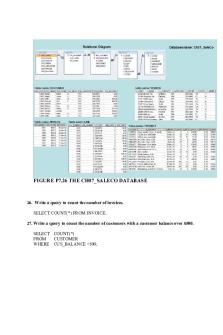
Ch7 - Ch7
- 11 Pages
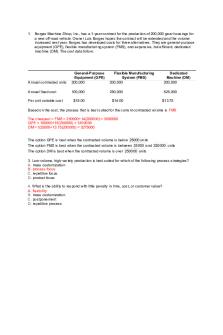
Ch7
- 4 Pages
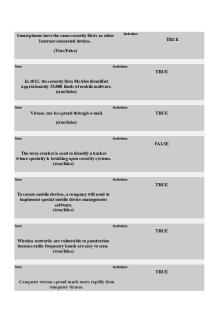
Testbank ch7
- 4 Pages
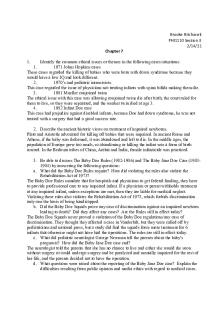
PHI1110 CH7
- 3 Pages
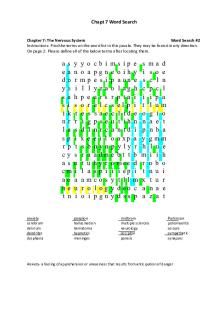
Ch7. Word Search
- 3 Pages

Ch7-practice Questions
- 5 Pages

CH7 review for final
- 2 Pages
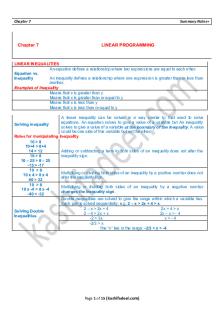
QM-Ch7-Copy - iiiiiiiiiiiiiiiiiiiiii
- 15 Pages

Writing Analytically - Ch7
- 4 Pages
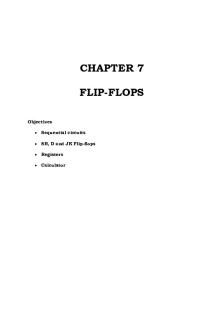
Ch7 - FLIP-FLOPS
- 12 Pages

Chapter 7 - CH7
- 18 Pages
Popular Institutions
- Tinajero National High School - Annex
- Politeknik Caltex Riau
- Yokohama City University
- SGT University
- University of Al-Qadisiyah
- Divine Word College of Vigan
- Techniek College Rotterdam
- Universidade de Santiago
- Universiti Teknologi MARA Cawangan Johor Kampus Pasir Gudang
- Poltekkes Kemenkes Yogyakarta
- Baguio City National High School
- Colegio san marcos
- preparatoria uno
- Centro de Bachillerato Tecnológico Industrial y de Servicios No. 107
- Dalian Maritime University
- Quang Trung Secondary School
- Colegio Tecnológico en Informática
- Corporación Regional de Educación Superior
- Grupo CEDVA
- Dar Al Uloom University
- Centro de Estudios Preuniversitarios de la Universidad Nacional de Ingeniería
- 上智大学
- Aakash International School, Nuna Majara
- San Felipe Neri Catholic School
- Kang Chiao International School - New Taipei City
- Misamis Occidental National High School
- Institución Educativa Escuela Normal Juan Ladrilleros
- Kolehiyo ng Pantukan
- Batanes State College
- Instituto Continental
- Sekolah Menengah Kejuruan Kesehatan Kaltara (Tarakan)
- Colegio de La Inmaculada Concepcion - Cebu
